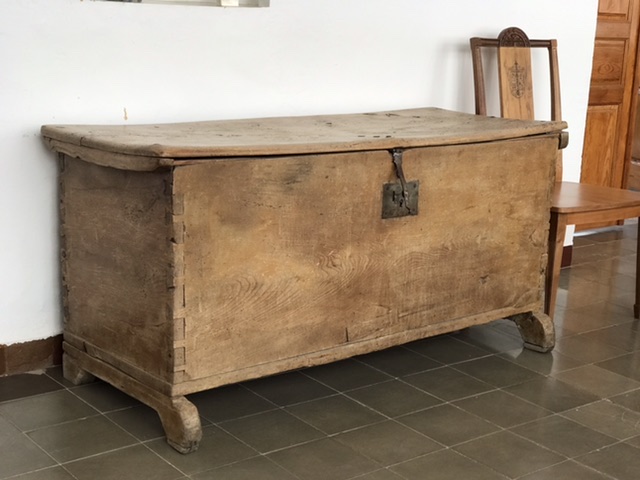An old Spanish chest at a Spanish church
Alcuescar is 40 kilometers on the camino from Merida but a stop in Aljucen splits the long stage almost in half. The camino trail snakes through the trees. Getting there is a little tough through rugged terrain and rock “forests”. The path featured exits, entrances, and opportunities to explore ancient paths and leave the trail. It felt like a labyrinth.
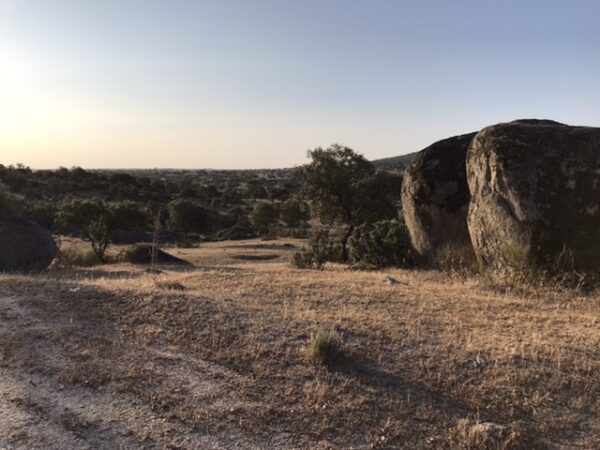
The approach to Alcuescar follows steep inclines and confusing signage. Just when I thought I was almost there, a sign would tease a new direction. I really had to pay attention. Fear that I might be turned around and in the wrong place was real.
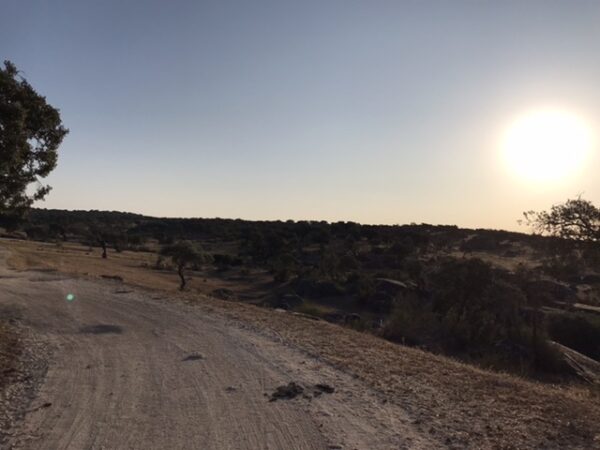
Now, it is getting late and all I can think about is that the albergue only has a few beds. When and if I find the place, I may not get one. All of a sudden one pilgrim overtook me on the trail. Then another passed by. And another. They stepped quickly. Everyone realizes what is at stake. I try not to panic as I count more pilgrims than beds.
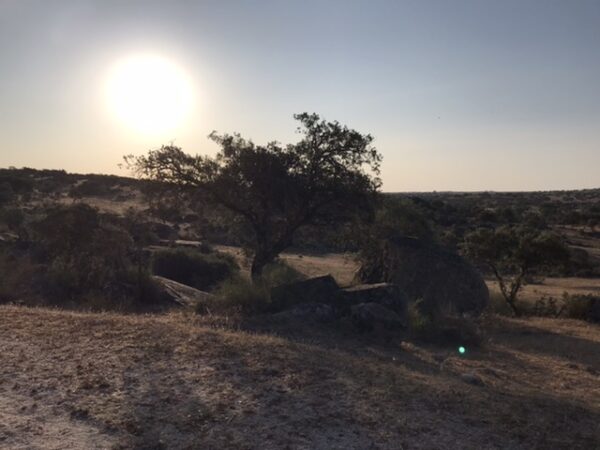
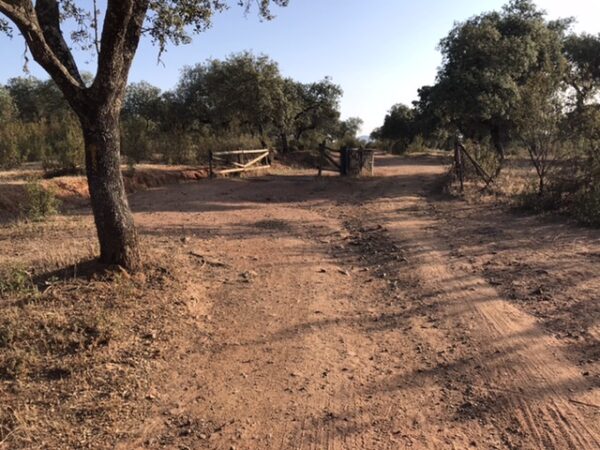
The shortcut
Fortunately, I found a shortcut to the albergue. Just as I approached a fork in the trail, I stopped to study which way I should go. A farmer on his property greeted me with an enthusiastic “buen camino”. I just asked, as part of a little small talk with my greeting, if I was going in the right direction to the albergue. He said “yes”. He also said that I could bypass the steep incline ahead by taking the path to my left. It was marked with yellow arrows, too.
I understood what he was saying in spite of my meager knowledge of Spanish. He also said something that was very important: I would come to a road and the albergue would be so close I could touch it.
He was right.
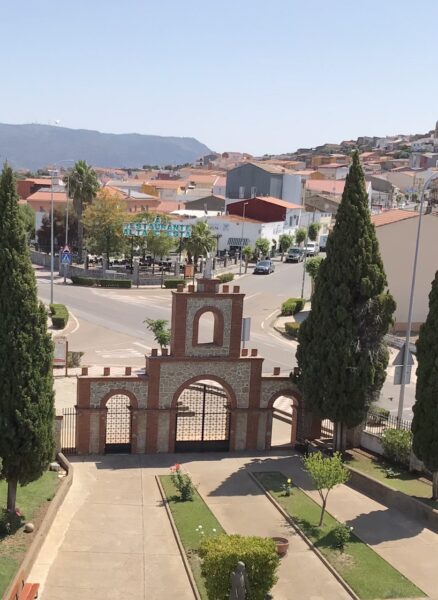
Unbelievably, I arrived at the albergue from the rear of the grounds before some of the people who passed me on the trail! I got there so fast that I was not sure if I was at the right place. Soon, however, I saw other pilgrims crossing the highway from that mountain trail toward the albergue.
Checking in
The volunteers who checked us into the main building quickly set the tone. We had to remove our shoes and have our credentials ready. Also, we had to decide if we wanted to participate in the communal dinner. Payment was collected for that. They were stern and I understand why they have to be. The vibes reminded me of primary school teachers calming down a group of hot and sweaty students before they entered a classroom.
The volunteers set out lemonade and brownies for us to sample while we waited.
I saw an old chest today
Suddenly, I saw it.
There it was… in the hall a few feet from the registration desk. I took some pictures. Not sure if I was allowed to touch it, I tried to lift the lid when no one was looking.
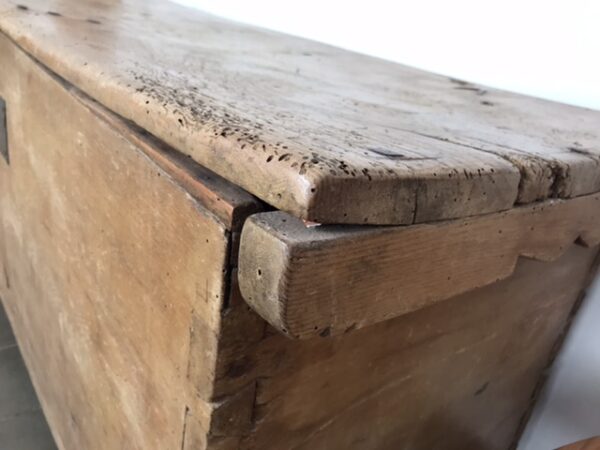
That lid was too heavy. I did not want to cause damage to the possibly ancient specimen in an attempt to force it open. It may not be in good working order. I did not want that heavy lid to slip from my tired hands with a bang. That would have been an embarrassing amateur move. So I left it alone when it was my turn to sign in. Lastly, I did not want to incur the wrath of those very strict hosts. I had to be satisfied with these few pictures.
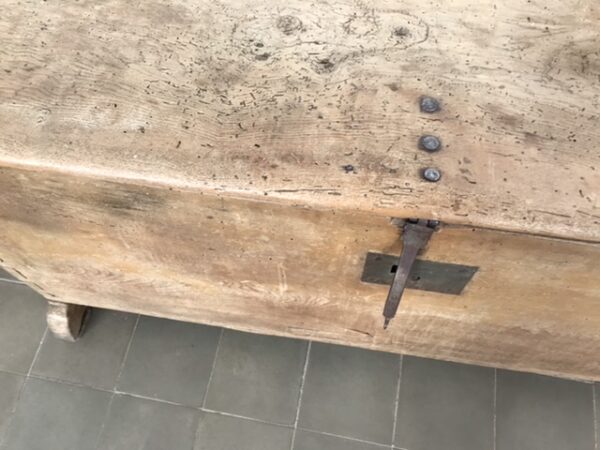
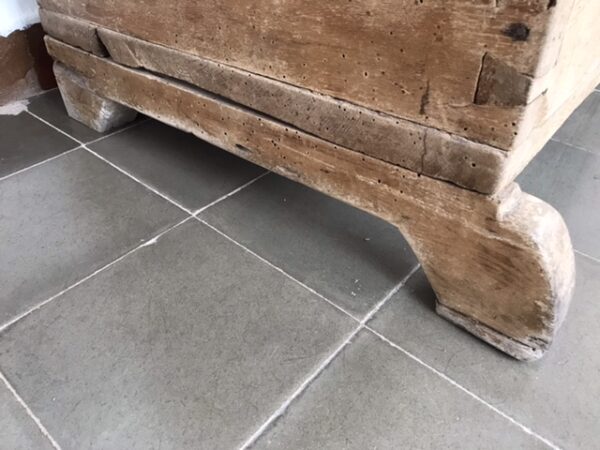
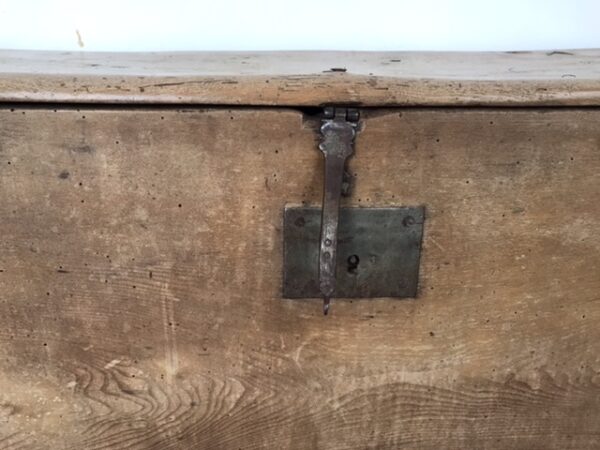
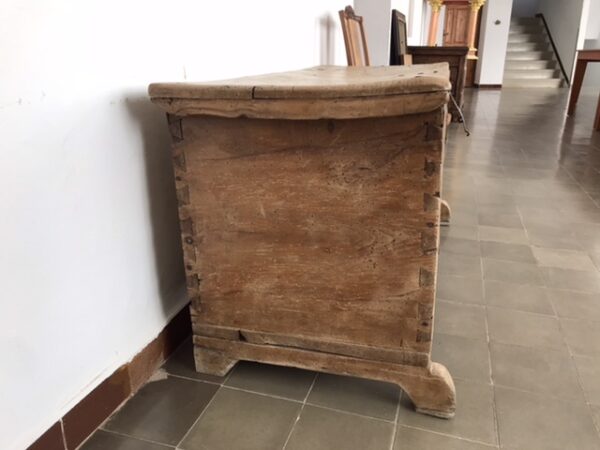
Finally I was directed to the stairs to the third floor. The stone steps had very wide treads that did not help my sore feet. My backpack felt heavier as I reached each landing until I finally reached the top. The stairs opened into a large bunk room where I selected my bed.
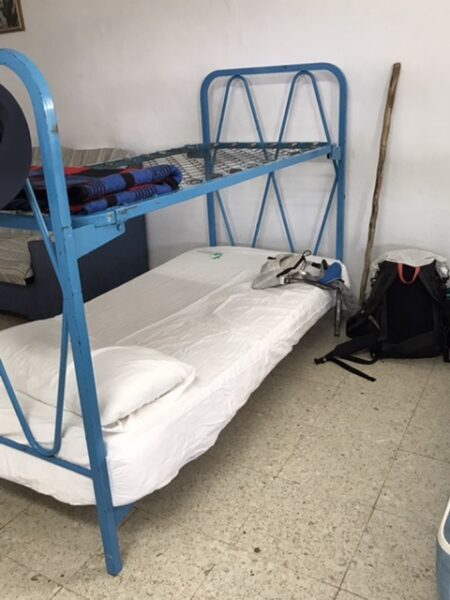
The bunk room held at least 12 beds and a large bathroom with multiple showers and toilets. Women and men shared the room but the bathroom had dividers for privacy. The entire area was sparse, but the beds were clean.
The patio behind the church had a wash tub and lines to hang laundry. By the time I made it down, there was barely room to hang my clothes. And did I say the rays from the setting sun beat down on my head?
Like most donativos, this place is exclusively for pilgrims. This is a system that encourages pilgrims to donate an amount comparable to the appreciation for safe shelter on the camino. You pay in the morning before you leave. The contribution for the meal covers the cost and extent of the meal for pilgrims arriving the next day.
I opted for the communal meal. Before we reached the kitchen, we were given a brief tour of the public areas of the church and a blessing. Then we broke bread.
Shelter House of the Slaves of Mary and the Poor
Next door is a religious assistance center, the Shelter House of the Slaves of Mary and the Poor, for people with special needs. The residents sit and walk freely around the well manicured grounds.
Ebb and flow of life
Next morning, I placed my money in the donativo box. Then I walked out the door, turned left and continued on the camino trail toward the next town.
The trail quickly veered onto the rural trail. Cows looked up for a second, then went back to eating.
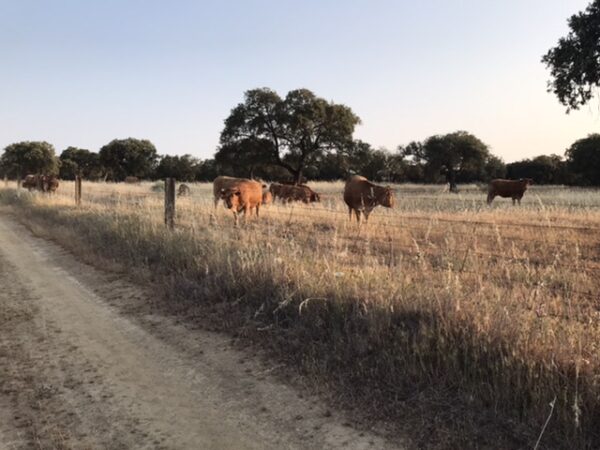
Some animals cannot.
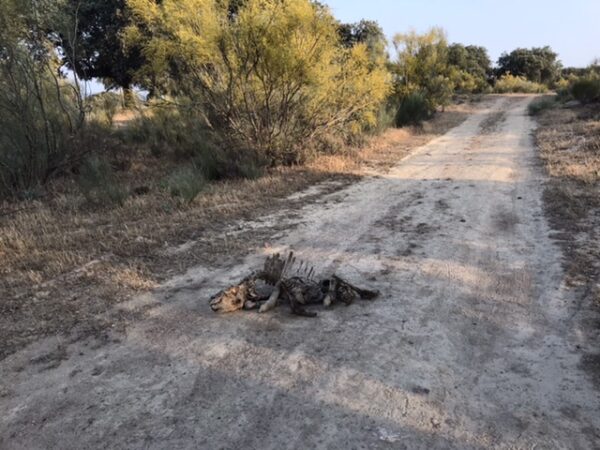
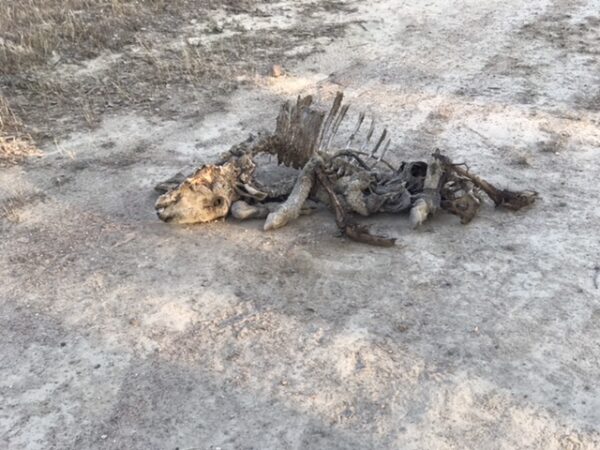
Black and white storks build their nest on old buildings and electric masts all over southern and western Spain.
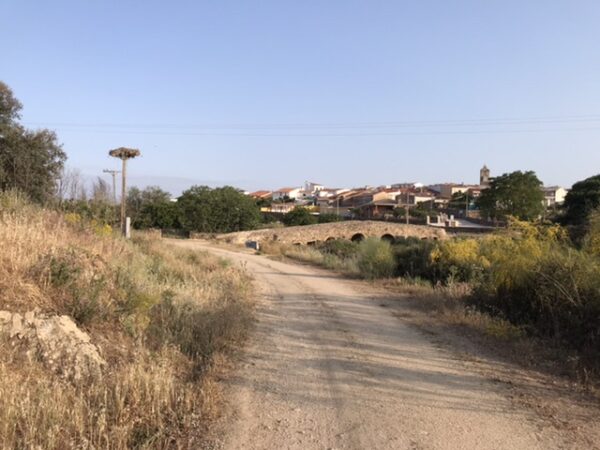
Here is a closeup:
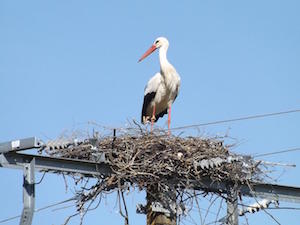
I have not shown it much, but roses are plentiful on the trail, mainly around residential properties.
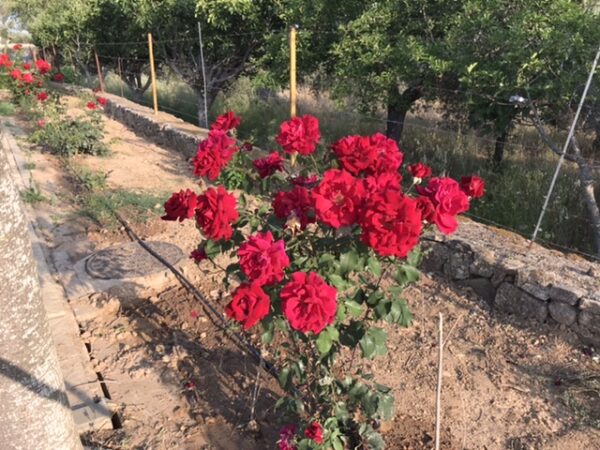
Roman structures
The caminos are a treasure trove of preserved Roman structures and archaeological information.
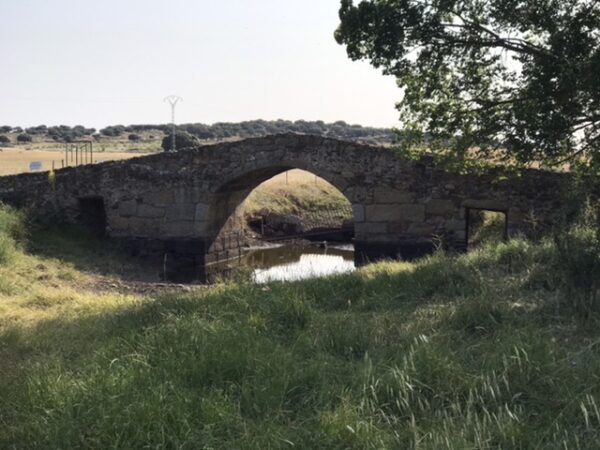
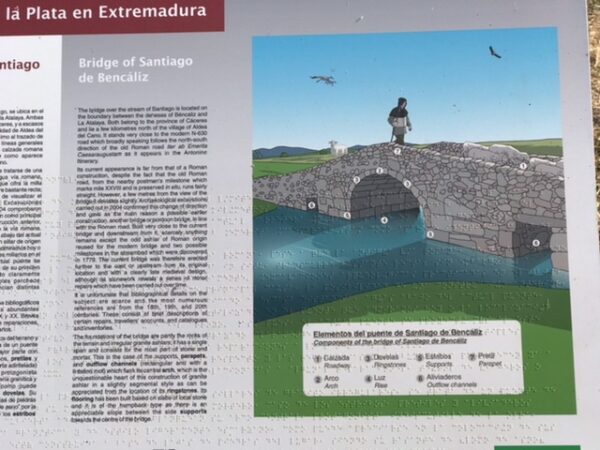
The next resting place
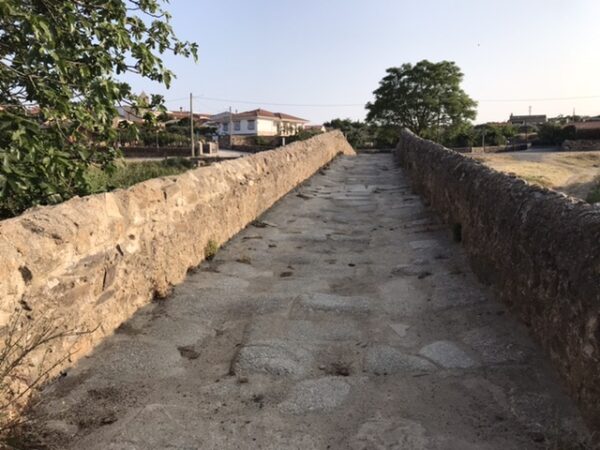
Another stone bridge crossing.
Albergue ahead. How do I know?
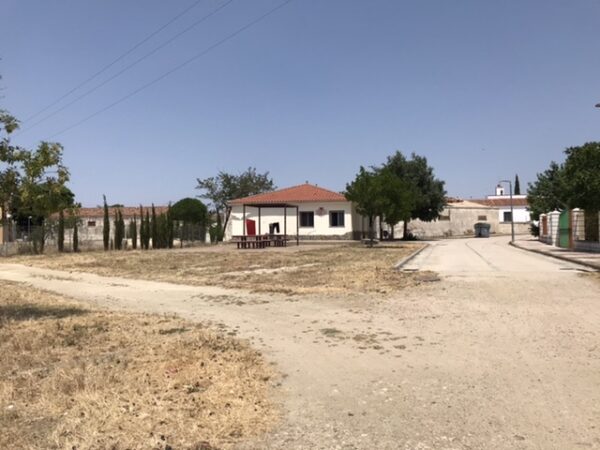
I see clothes on a clothesline blowing in the wind.
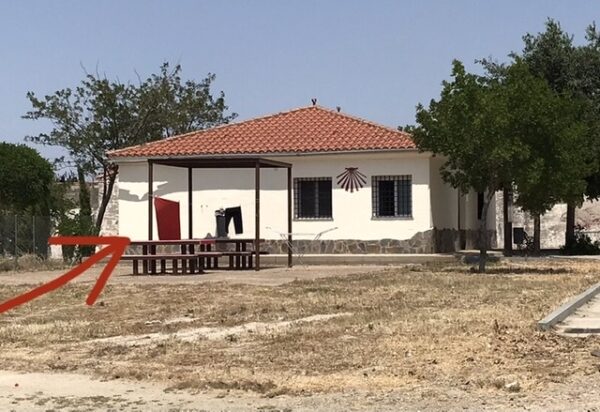
This was easy. I did not have to walk around the village for 30 minutes looking for the place!
____
Baadaye and Buen camino
Shirley J ♥️
____
This and several posts this summer are chronicling my pilgrimage in Spain where I am walking the 1400 kilometer-long camino Mozárabe, camino Via De la Plata, and now camino Sanabres to Santiago de Compostela. Read my announcement here.
My YouTube channel – Noire Pilgrim By Shirley J – features mini videos, snippets, and shorts from my pilgrimage on the camino.

